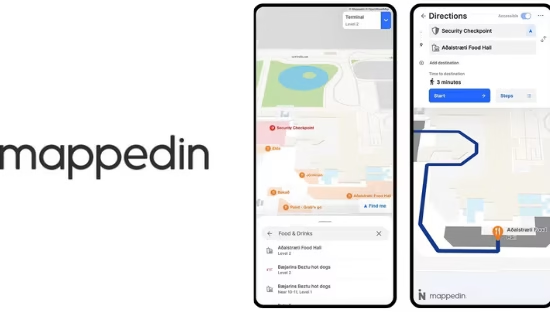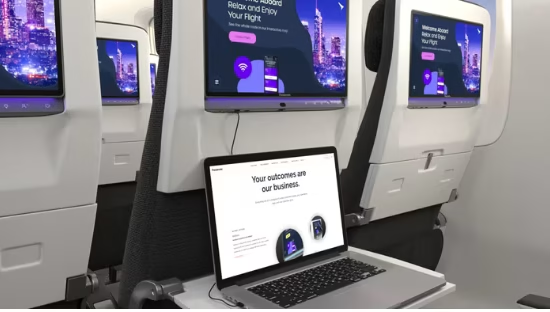
5 Things eSIM Users Get Completely Wrong About Smartphones
The eSIM revolution has been sold as the ultimate freedom: no more hunting down local SIM cards, no more airport kiosks, no more shock bills after a short trip abroad. And yes, in many ways, eSIM has delivered exactly that. Travelers today can switch carriers in seconds, activate a plan before they even leave home, and stay online anywhere from Tokyo to Tulum.
But here’s the catch: most eSIM users are still stuck with old beliefs about smartphones that no longer make sense. They treat their phones as if we’re still in the era of physical SIM cards, assuming that if a device has an eSIM slot, they’re covered for life. They think dual SIM automatically means flexibility, that flagships are always better, and that roaming with their home carrier is somehow still the easiest option. Spoiler: all of those assumptions are costing them money, speed, and opportunities.
Think about it. A phone today isn’t just a gadget for messaging and calls—it’s the centerpiece of your entire connectivity strategy. It decides how many eSIM profiles you can juggle, which networks you can tap into abroad, and how long you can stay secure before software updates leave you behind. Yet far too many users buy the wrong phone for the wrong reasons, then wonder why their eSIM experience feels limited.
The truth? The real roadblocks to eSIM adoption aren’t the carriers—it’s the way people think about smartphones themselves. And unless we challenge those outdated beliefs head-on, eSIM will never deliver its full potential.
So let’s break it down. Here are the five biggest things eSIM users get completely wrong about smartphones—and the bold truths you need to hear if you actually want to take advantage of the technology.
1. “Any phone with an eSIM slot is future-proof.”
Bold Truth: Having an eSIM slot doesn’t future-proof your device—software support does.
Many people believe that if their phone supports eSIM, they’re ready for the future. But in practice, the hardware is only half the story. The real bottleneck is software support. Apple offers around 6–7 years of iOS updates, while most Android phones get just 2–4 years (Samsung and Google being rare exceptions, pushing closer to 5–7). That means your “future-proof” eSIM device could stop receiving updates, patches, and even carrier configuration files long before the hardware dies. Without updates, eSIM profiles may fail to install properly, or new carrier features won’t work. Future-proofing isn’t about the slot—it’s about the ecosystem.
2. “Dual SIM equals total flexibility.”
Bold Truth: Dual SIM often sounds better on paper than it works in reality.
Travelers love the idea of running two SIMs (or eSIM + physical SIM) at once. But in practice, the experience varies dramatically by phone. On iPhone, for instance, you can run dual eSIMs or one eSIM + one physical SIM, but only one data line can be active at a time. On many Androids, dual SIM functionality is uneven—some models force you to choose which SIM handles 5G, others don’t allow simultaneous standby. Dual SIM is useful if you’re juggling business and personal numbers or mixing local data with a home SIM for calls, but it’s not the “ultimate freedom” people assume. Without careful management, it drains battery and complicates your settings more than it helps.
3. “The newest flagship phone is always the best for eSIM.”
Bold Truth: Flagships are overkill—what matters is network band support and stability, not titanium frames and AI cameras.
People think they need the latest iPhone Pro Max or Samsung Ultra to “get the most out of eSIM.” The truth? eSIM performance depends on modem quality, supported frequency bands, and carrier certification—not whether your phone costs €300 or €1,500. Midrange devices like Google Pixel 7a or Samsung A54 often provide smoother eSIM handling than flagships bloated with unnecessary features. Unless you’re buying for photography or gaming, the extra €1,000 doesn’t improve your connectivity. For travelers, the real “best” phone is the one that’s unlocked, supports the widest range of global LTE/5G bands, and gets reliable software updates—not necessarily the flashiest flagship.
4. “My phone’s roaming option is the easiest way to stay online.”
Bold Truth: Using your home carrier’s roaming is the laziest—and most expensive—choice in the eSIM era.
Millions still enable roaming on their primary SIM because it feels “easier” than installing an eSIM. But this is an expensive illusion. For example, EU travelers in Turkey routinely pay €6–10 per GB when roaming, while an eSIM from providers like Airalo, Airhub, or Bnesim delivers data for €1–2 per GB. The installation takes less than two minutes, and many apps let you buy plans directly with Apple Pay or Google Pay. Roaming is no longer convenient—it’s a tax on people unwilling to adapt. In 2025, the easiest option is also the dumbest one to pay for.
5. “A phone is just a device—I’ll upgrade when mine dies.”
Bold Truth: Your phone isn’t just a gadget—it’s your gateway to global connectivity. Treat it like infrastructure, not a toy.
Too many users think of their smartphone as a personal gadget that only matters for apps, selfies, and messaging. But in the eSIM era, your phone determines whether you can store 20 eSIM profiles, switch carriers instantly, tap into global 5G bands, or use advanced features like iSIM or satellite connectivity. Stick with an old, unsupported device, and you’ll miss out on cheaper data, seamless carrier switching, and future services like integrated Wi-Fi offload. In short: your phone is no longer just a device—it’s the backbone of your travel connectivity. If you treat it like a disposable toy, you’ll keep overpaying while others move ahead.
Conclusion: Smartphones Have Become Infrastructure
eSIM isn’t about a chip—it’s about control. Control is shifting away from carriers that thrived on roaming fees toward devices and platforms that let travelers connect on their own terms.
The numbers don’t lie: analysts project eSIM usage will quadruple by 2030, with travel driving adoption. Apple is phasing out SIM trays worldwide, Google is doing the same with the Pixel 10, and marketplaces like Airalo and Nomad are already stealing billions in revenue from operators too slow to adapt.
That means your phone is no longer just a gadget—it’s infrastructure. The wrong device locks you into old costs and limited networks. The right one keeps you flexible, updated, and free to switch at will. If you are not sure which eSIM is for you, check out the Best eSIM Finder.
The winners in the eSIM era will treat their smartphones like global connectivity hubs—not toys. Everyone else will keep paying for a past that’s disappearing fast.











